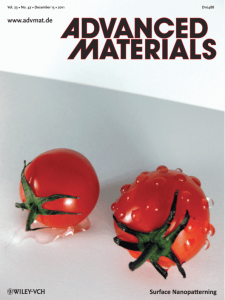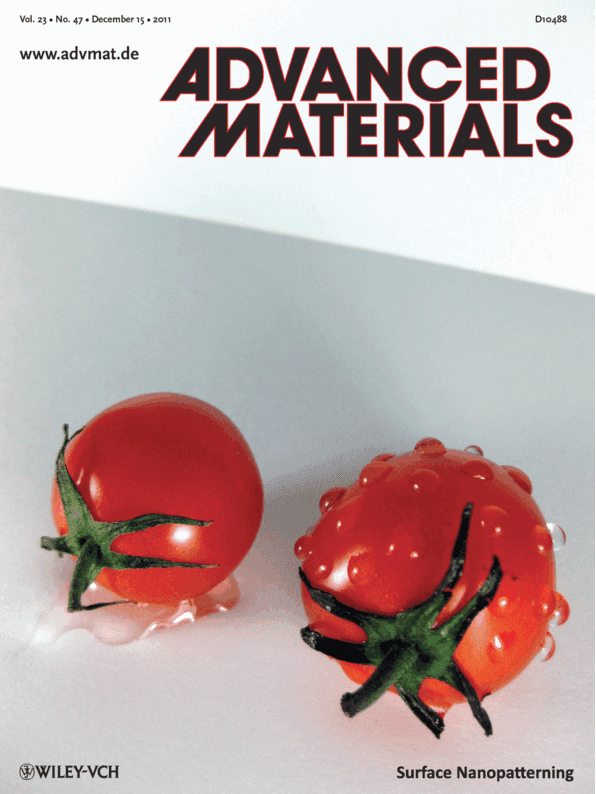 Bioinspired surface patterning, the practical limits to nanostructured photovoltaic efficiency, and a landmark review on graphene are among the most-downloaded Advanced Materials papers in December.
Bioinspired surface patterning, the practical limits to nanostructured photovoltaic efficiency, and a landmark review on graphene are among the most-downloaded Advanced Materials papers in December.
How do you print patterns on Teflon if nothing sticks? Haeshin Lee, Sang Ouk Kim, and co-workers looked at how mussels stick to surfaces underwater for ideas. Using similar chemistry, they are able to pattern block copolymers on surfaces like these cherry tomatoes. The left tomato is uncoated, while the right tomato has water droplets where it has been patterned with polydopamine.
Whitesides’ Group: Writing a Paper
This 2004 essay describes how scientific papers are planned and written in the George Whitesides group, and contains valuable insights for the beginning graduate student as well as the more experienced researcher.
Thermally Stable, Dye-Bridged Nanohybrid Based White Light-Emitting Diodes
As featured on the cover of Issue 48 of Advanced Materials, Byeong-Soo Bae and co-workers have developed nanohybrid white LEDs based on red and green luminescent dyes covalently bridged to oligosiloxanes. This organic luminescent material is a potential alternative to inorganic phosphors for high-performance white LEDs.
Practical Roadmap and Limits to Nanostructured Photovoltaics
What are the the practical and the fundamental performance limits of nanostructured photovoltaic devices? The authors reason that a practical single-junction laboratory power conversion efficiency limit of 17% and a two-cell tandem power conversion efficiency limit of 24% are possible for nano-PVs, which, when combined with operating lifetimes of 10 to 15 years, could position them as a transformational technology for solar energy markets.
Graphene and Graphene Oxide: Synthesis, Properties, and Applications
Rodney Ruoff (University of Texas at Austin) provides a comprehensive review of the synthesis, properties, and applications of graphene and related materials (primarily, graphite oxide and its colloidal suspensions and materials made from them), from a materials science perspective.

















